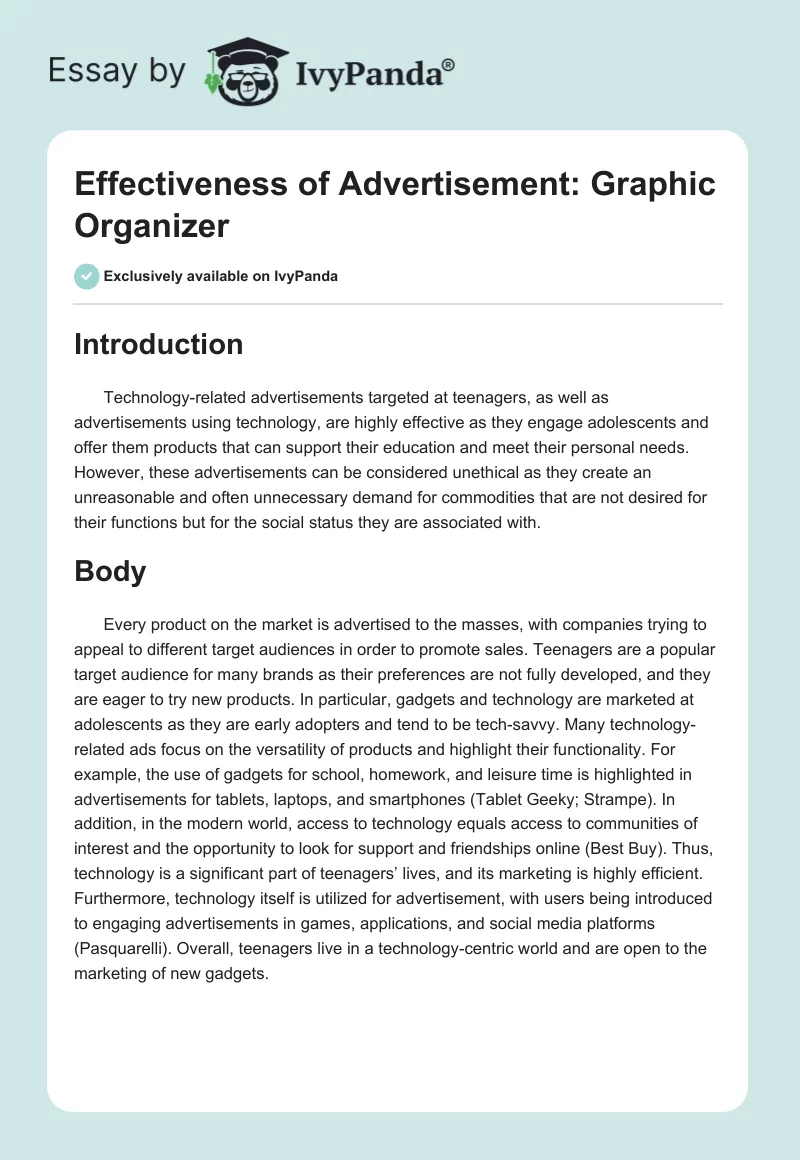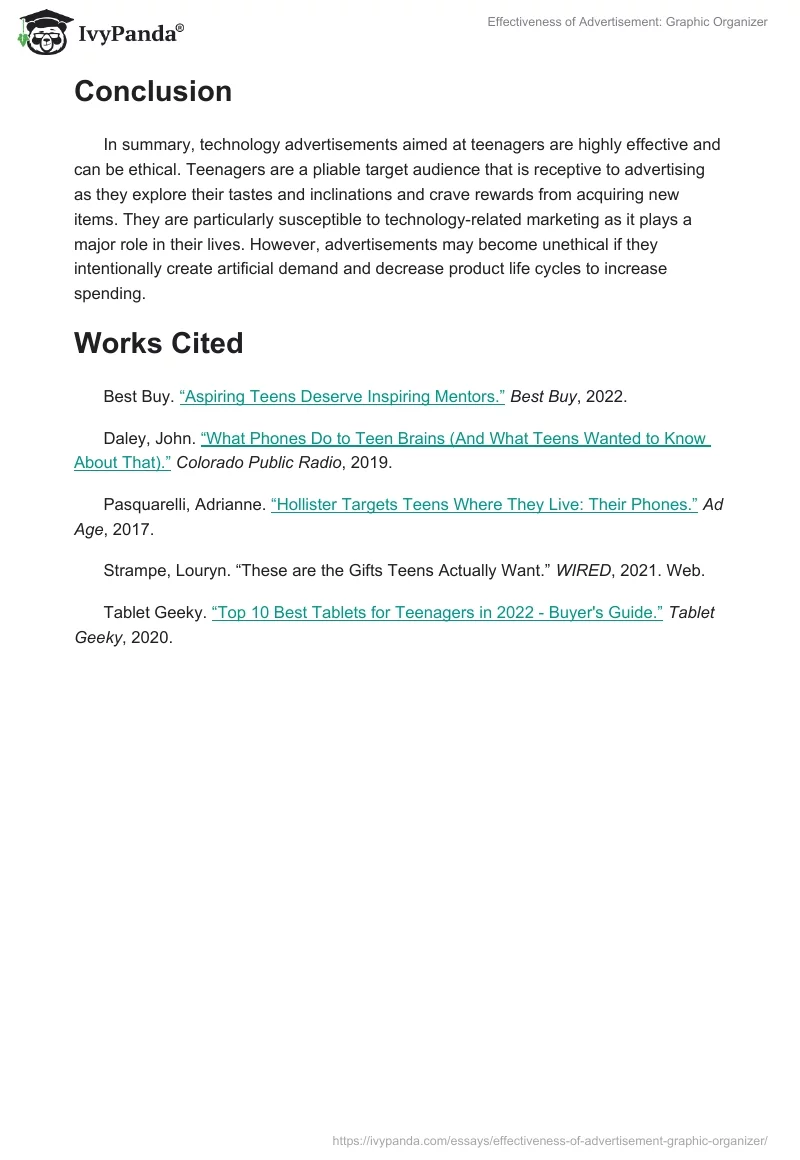Introduction
Technology-related advertisements targeted at teenagers, as well as advertisements using technology, are highly effective as they engage adolescents and offer them products that can support their education and meet their personal needs. However, these advertisements can be considered unethical as they create an unreasonable and often unnecessary demand for commodities that are not desired for their functions but for the social status they are associated with.
Body
Every product on the market is advertised to the masses, with companies trying to appeal to different target audiences in order to promote sales. Teenagers are a popular target audience for many brands as their preferences are not fully developed, and they are eager to try new products. In particular, gadgets and technology are marketed at adolescents as they are early adopters and tend to be tech-savvy. Many technology-related ads focus on the versatility of products and highlight their functionality. For example, the use of gadgets for school, homework, and leisure time is highlighted in advertisements for tablets, laptops, and smartphones (Tablet Geeky; Strampe). In addition, in the modern world, access to technology equals access to communities of interest and the opportunity to look for support and friendships online (Best Buy). Thus, technology is a significant part of teenagers’ lives, and its marketing is highly efficient. Furthermore, technology itself is utilized for advertisement, with users being introduced to engaging advertisements in games, applications, and social media platforms (Pasquarelli). Overall, teenagers live in a technology-centric world and are open to the marketing of new gadgets.
Conclusion
In summary, technology advertisements aimed at teenagers are highly effective and can be ethical. Teenagers are a pliable target audience that is receptive to advertising as they explore their tastes and inclinations and crave rewards from acquiring new items. They are particularly susceptible to technology-related marketing as it plays a major role in their lives. However, advertisements may become unethical if they intentionally create artificial demand and decrease product life cycles to increase spending.
Works Cited
Best Buy. “Aspiring Teens Deserve Inspiring Mentors.”Best Buy, 2022.
Daley, John. “What Phones Do to Teen Brains (And What Teens Wanted to Know About That).”Colorado Public Radio, 2019.
Pasquarelli, Adrianne. “Hollister Targets Teens Where They Live: Their Phones.”Ad Age, 2017.
Strampe, Louryn. “These are the Gifts Teens Actually Want.” WIRED, 2021. Web.
Tablet Geeky. “Top 10 Best Tablets for Teenagers in 2022 – Buyer’s Guide.”Tablet Geeky, 2020.


